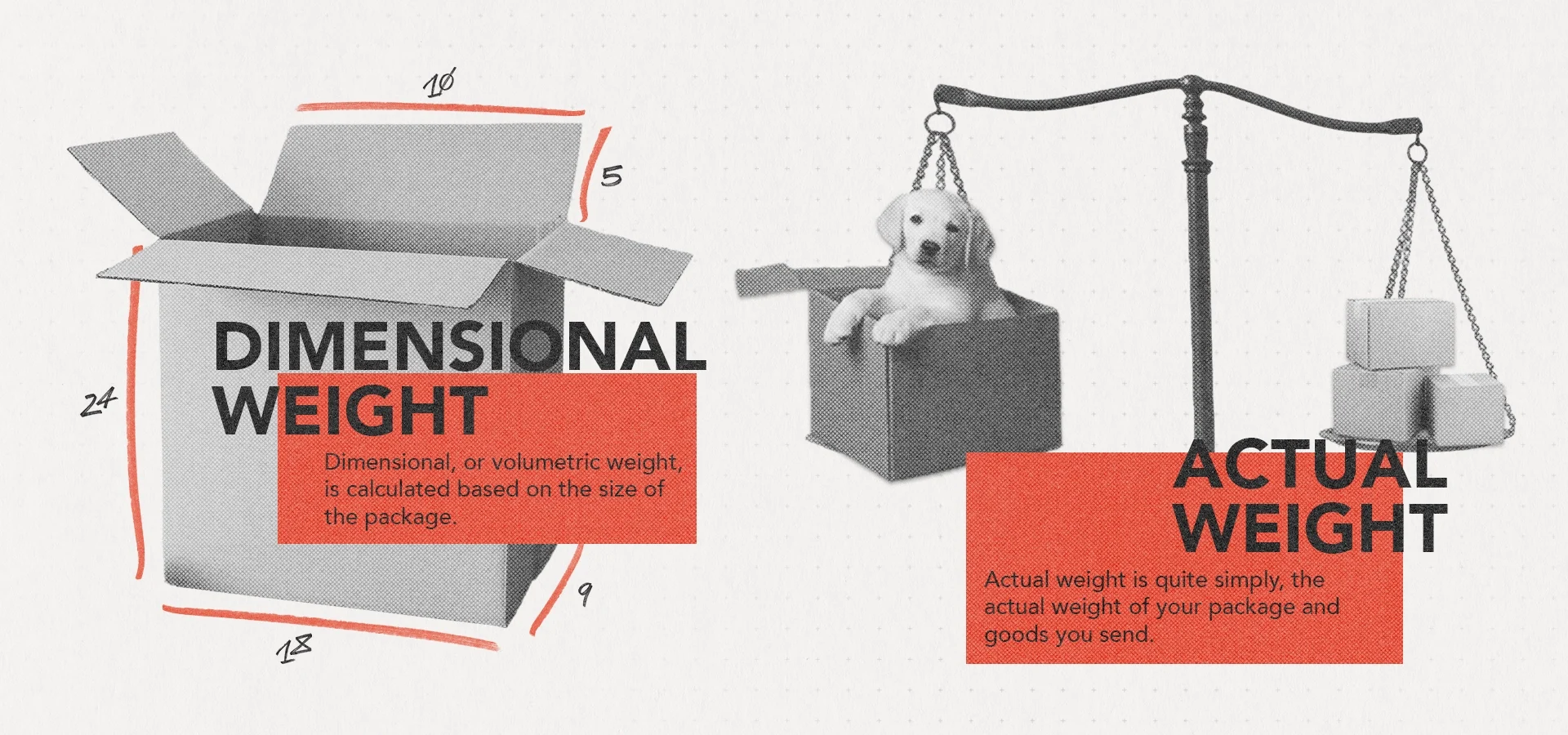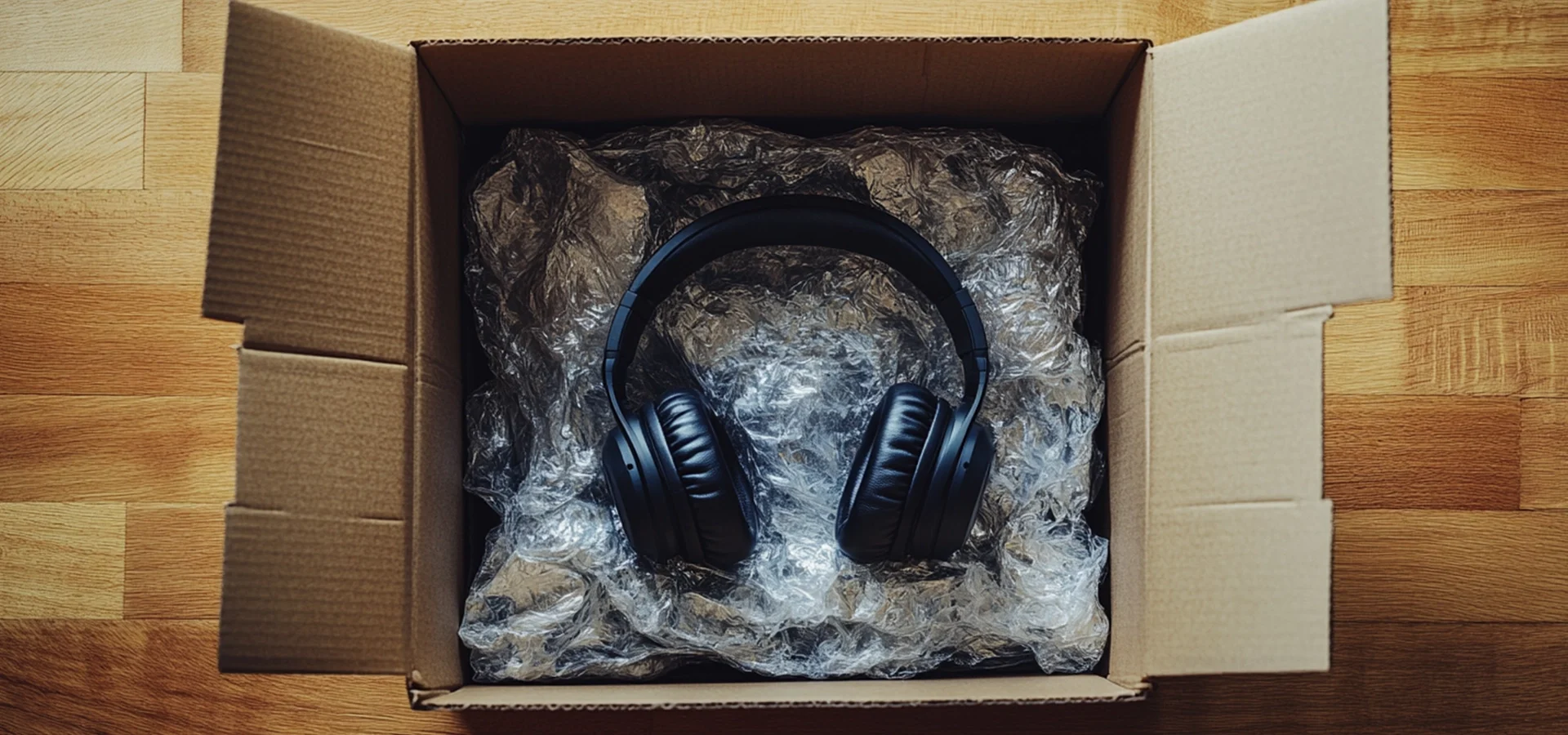Naturally for any businesses looking to increase efficiencies, shipping costs present a significant opportunity to find savings. For warehouse managers, logistics managers, operations managers, finding ways to reduce the cost of distribution without compromising on quality or customer satisfaction is the key priority.
The most effective way to do this is by optimising your packaging system and that’s exactly what you’ll find help for in the blog below. Several tips and strategies for streamlining your packaging process, with an eye to lowering your shipping costs.
Understanding the Cost Drivers in Shipping

Dimensional Weight vs. Actual Weight
Perhaps the best, and most obvious place to start this blog, is with weight. Both dimensional weight and actual weight play a crucial role here. Dimensional, or volumetric weight, is calculated based on the size of the package, rather than actual weight. This means a large, lightweight box can actually end up costing more to ship than a smaller, heavier one.
Imagine sending a small, lightweight item like a set of headphones in a box big enough to fit a microwave. Carriers often charge based on the space your package takes up in the truck, not just its weight. This is where many companies lose money without realising.
But this is easy to offset. By right-sizing your packaging — or using boxes that are appropriately sized for the items you’re shipping — you can avoid those unnecessary dimensional weight charges.
Material Costs and Sustainability
Another key thing to consider is the material you choose for packaging. While it might be tempting to choose the cheapest solution, all too often we see it result in product damage, which causes its own set of headaches – and costs. Fortunately, there are cost effective and sustainable materials available that can offer both protection and affordability.
Sustainability isn’t just about being planet friendly; it’s also about being cost efficient. Therefore, switching to lightweight, durable materials such as recycled cardboard or biodegradable plastics could give you the best of both worlds’ solution. These materials reduce the weight of your package, but are easy to dispose of and can responsibly enhance your sustainability profile too.
The Role of Packaging Design in Cost Optimisation

Efficient Use of Space
As mentioned earlier, dimensional space can be key when it comes to reducing shipping costs. The more efficiently you can pack your products, the less space they take up – and the less you pay for shipping.
Reducing Empty Space
As an extension of the previous point, the space inside your packaging is equally important to consider. Mismatched packaging can drastically increase the likelihood of product damage, which can result in costly returns and customer dissatisfaction.
To reduce that empty space, consider using inserts or custom packaging, like our versatile NOMAFOAM, or changing your packaging technique and right sizing your goods. By selecting the smallest possible box that can still protect your product, you’ll minimise empty space and lower shipping costs.
Weight Management
While reducing the size of your packaging is important, it’s also crucial to manage the weight of the materials used. Heavy packaging materials can quickly increase your shipping costs, especially for large or bulk shipments.
Switching to lightweight, yet sturdy, materials can make a significant difference. For instance, corrugated cardboard is an excellent choice because it offers strong protection while being relatively light. Another option is biodegradable plastics, which are not only lighter but also more environmentally friendly.
Improving Load Stability in Cost-Effective Shipping
Load Stability Principles
Ensuring that your packages are stable and secure during transit is essential for preventing damage and therefore unnecessary costs. Unstable loads can lead to product damage, increased returns, and even higher insurance premiums.
The name of the game in load stability is to secure your packages properly. This might sound simple, but it’s a data driven operation that could involve switching to stretch film, strapping, or corner boards to keep your packages optimised. That being said, it’s just as important to ensure your packages are stacked correctly, with heavier items at the bottom and lighter items on top.
Collaborating with Carriers for Cost-Efficient Packaging
Understanding Carrier Guidelines
Every carrier has its own set of packaging guidelines, and failing to adhere to these can result in surcharges or higher shipping costs. It’s crucial to understand and follow these guidelines to avoid unexpected fees.
For instance, some carriers have specific requirements for package dimensions, weight limits, and some even labelling. By aligning your packaging process with these guidelines, you can ensure that you’re getting the best possible rates.
Negotiating with Carriers
If you have a high shipping volume, it could be worth considering negotiations with your carriers for better rates. Carriers are often willing to offer discounts or customised pricing based on your shipping patterns and volumes. Particularly for those who have demonstrated optimised packaging, find they have additional leverage in these negotiations.
Training and Engaging Your Team
Employee Training
Refining your packaging process is not a one-time effort, it requires continual improvement. Your team plays a vital role in the shipping operation and therefore, upskilling them on the best practices for packaging, load stability and material usage can significantly reduce errors and improve the overall quality of your packaging.
Measuring and Monitoring Success
Key Performance Indicators (KPIs)
To measure the effectiveness of your packaging optimisation efforts, it’s important to track key performance indicators (KPIs). Some standout metrics for this include cost per shipment, damage rates, return rates, and customer satisfaction. Monitoring these will help identify areas for improvement and ensure that your packaging strategy is delivering results.
Continuous Feedback Loop
Gathering feedback from carriers, customers, and internal teams is also essential for refining your packaging strategy. Encourage open communication and use this feedback to make data-driven decisions that improve your packaging process.
Conclusion
The most effective way to reduced shipping costs is to optimise your packaging strategy. Refining the process, understanding the key cost drivers and making necessary adjustments is an ongoing process and continually revisiting it, should help you to make significant improvements. By making that process a priority, you’ll not only save money, but build a more sustainable and customer friendly business.


 Call 01524 734040
Call 01524 734040  Email sales@castleindustrial.com
Email sales@castleindustrial.com  We're here Monday to Friday 7am - 5pm
We're here Monday to Friday 7am - 5pm